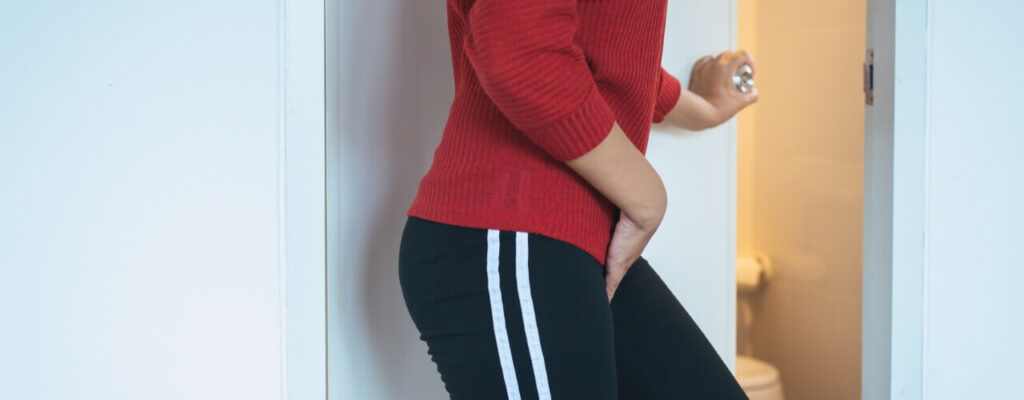Why Treating Urinary Incontinence with Physical Therapy Works

Studies show that physical therapy is one of the most effective treatment options available, especially for women
Have you ever been out and about–only to suddenly realize you need to get to a bathroom now? Or do you find yourself wearing panty liners as a way to handle uncontrollable leakage? While urinary incontinence is often a source of shame, it’s more common than you think–and not just among the elderly, either. Fortunately, Vitality Women’s Physical Therapy in IL offers several proven methods of treatment.
While we often associate incontinence with aging, the truth is the condition affects up to 50% of adult women, largely because it’s a common after-effect of pregnancy. Unfortunately, many women never seek treatment, even though help is available.
Physical therapy is actually one of the most useful means of incontinence relief. At Vitality Women’s Physical Therapy in IL, we’re well-versed in the latest research about treatment for urinary incontinence, particularly in women.
Schedule an appointment today to learn more about what options are available to you.
Different types of incontinence: symptoms and causes
There are four main types of incontinence:
- Stress incontinence: occurs when urine leaks out while under pressure, such as when you’re laughing or coughing
- Urge incontinence: occurs when you have a sudden, overwhelming urge to urinate
- Mixed incontinence: a blend of both stress and urge incontinence symptoms
- Total incontinence: occurs when your bladder can not store any liquid at all. This is a severe form and, fortunately, is much less common.
Incontinence can have several potential causes, but one of the most common is weakened pelvic floor muscles, which is why incontinence is so common in women who have given birth. Fortunately, physical therapy at Vitality Women’s Physical Therapy offers a variety of proven treatments designed to strengthen your pelvic floor, train your bladder, and improve your quality of life.
Proven treatments for incontinence relief
One of the most successful modes of physical therapy-based incontinence treatment is pelvic floor muscle training (PFMT). Your pelvic floor is a muscle like any other, and just like your biceps or quads, it benefits from strength training. PFMT is particularly effective for women suffering from incontinence regardless of whether or not they have been pregnant.
At Vitality Women’s Physical Therapy, we’ll show you pelvic floor exercises designed to strengthen and train your pelvic floor muscles. Several of these exercises you may already be familiar with.
Pelvic floor contractions are strengthening exercises where you squeeze/lift and release the muscles that control your urine stream. You’ve probably heard instructors talk about pelvic floor exercises during a regular fitness class: bridges and squats are two bodyweight exercises that also work your pelvic floor.
Bladder training is another proven means of treating incontinence. With this treatment, you use strategies to reduce or delay the urge to urinate to gradually increase the time between bathroom visits. Our physical therapists can help you develop a bladder training program to ensure success.
Finally, lifestyle changes can often help with incontinence. These changes include eliminating bladder irritants like caffeine or alcohol. We can also provide general education about bladder health–it might not sound like much, but a clinical trial saw improved incontinence outcomes among older women who took a two-hour bladder health class!
What to expect from physical therapy at Vitality Women’s Physical Therapy
At Vitality Women’s Physical Therapy in IL, we’re results-focused and dedicated to providing treatments that work. We’ll begin your treatment with a health history and a detailed physical exam to help determine both the type of incontinence you’re suffering from and the potential causes.
Once we understand your specific needs, we’ll develop a personalized treatment plan. Most likely, your treatment will involve a multi-week pelvic floor muscle training program; we’ll show you what exercises to do and how to do them. We may also incorporate other proven treatment options as needed.
Urinary incontinence can feel embarrassing for many women, but remember that you’re not alone–and that by seeking out treatment, you’ll be able to vastly improve your quality of life. The physical therapists at Vitality Women’s Physical Therapy are here to answer your questions in a private, judgment-free setting and help you to work toward optimal bladder health.
Schedule your appointment with Vitality Women’s Physical Therapy today
There’s no reason to delay your urinary incontinence treatment. Schedule an appointment with Vitality Women’s Physical Therapy in IL today to learn more about the proven ways physical therapy can provide you with incontinence relief.
